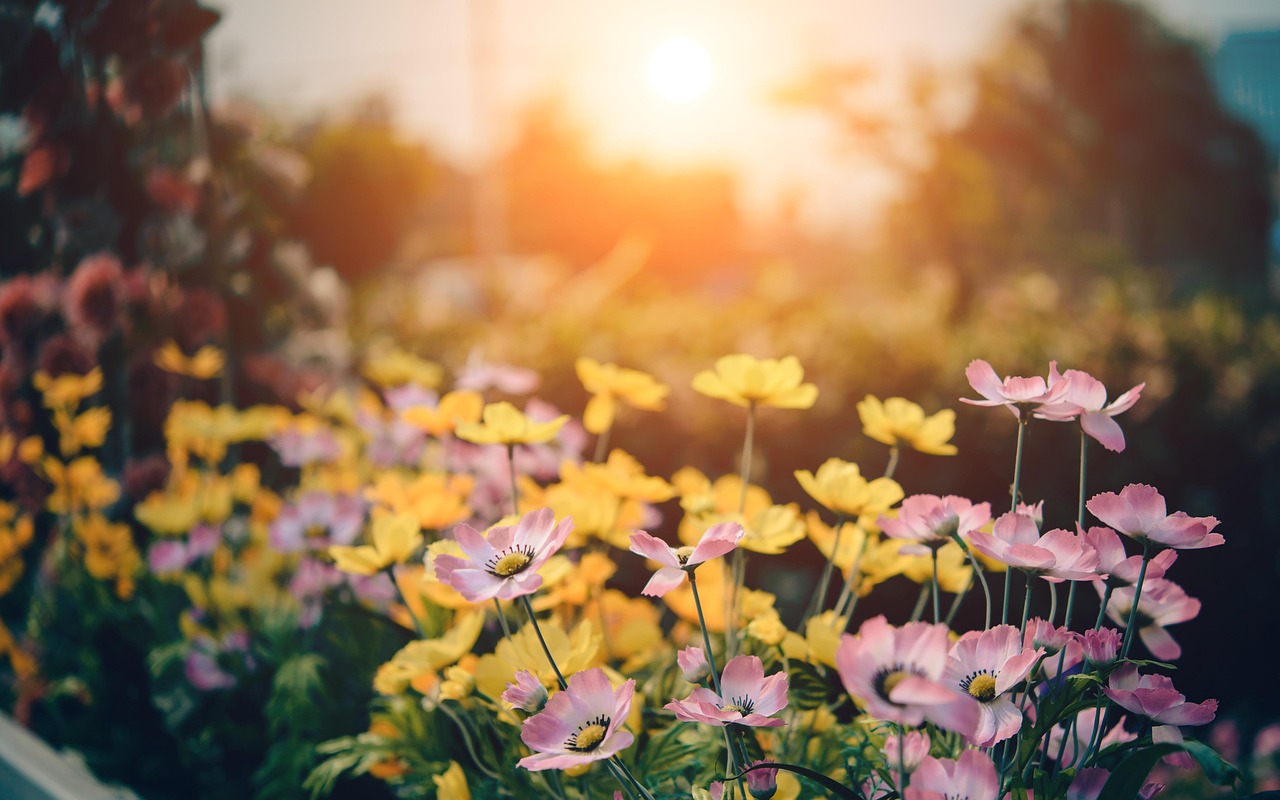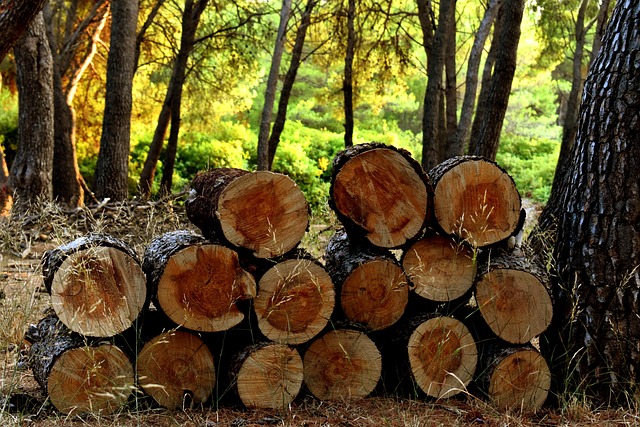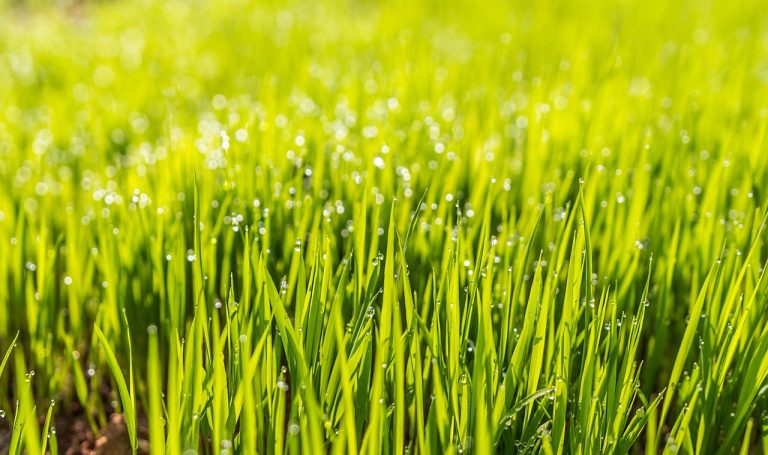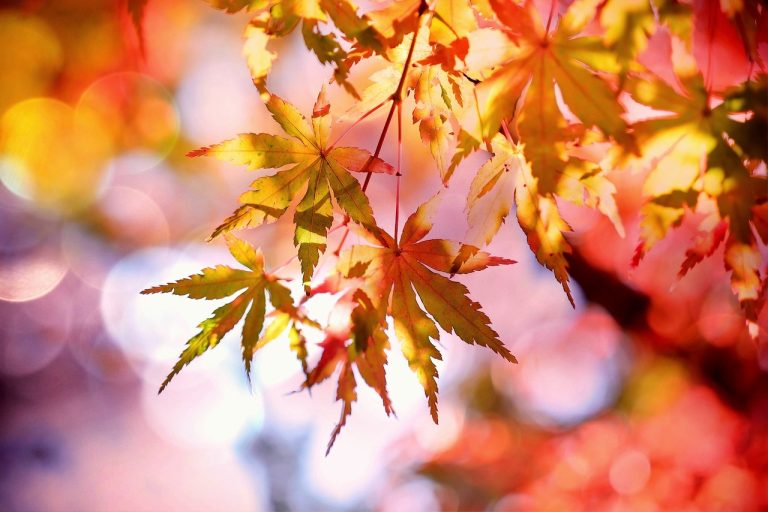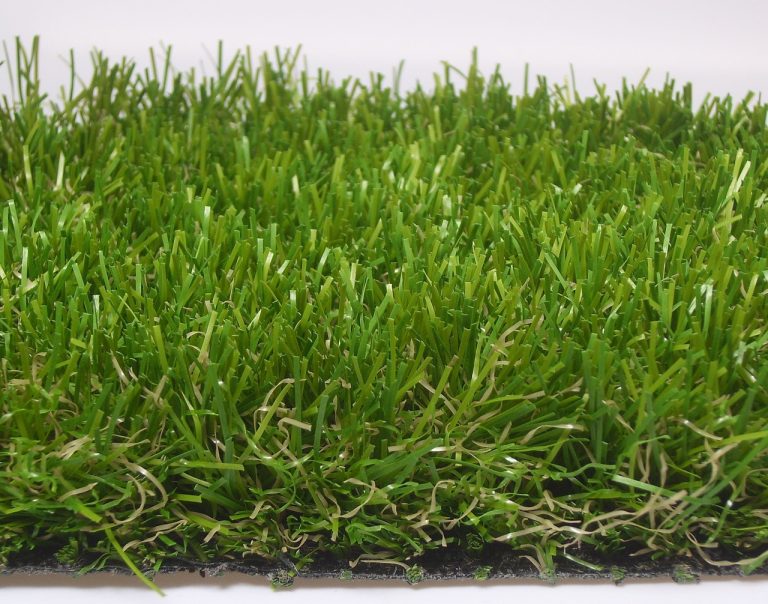GROUND COVER PLANTS IN MICHIGAN (6 Amazing Facts)
“In the heart of the Midwest, where the Great Lakes glisten and the seasons paint a kaleidoscope of colors, lies the enchanting world of Michigan’s ground cover plants. Picture a landscape where nature’s carpet unfurls beneath your feet, offering a tapestry of textures and hues that change with the passing of each season.
From the rugged shores of Lake Superior to the tranquil meadows of the Lower Peninsula, Michigan’s ground cover plants are a testament to the state’s resilience and natural beauty. These botanical marvels not only grace the landscape but also provide ecological benefits that sustain the delicate balance of this remarkable region. Join us on a journey through the lush greenery and vibrant blooms that make Michigan’s ground cover plants an extraordinary and essential part of this Midwestern tapestry.”
WHY GROUND COVER PLANTS IN MICHIGAN?
Ground cover plants in Michigan offer a game-changing solution for landscaping enthusiasts. Michigan’s harsh winters and temperamental weather demand hardy, low-maintenance vegetation to ensure year-round greenery.
Ground cover plants, known for their resilience and adaptability, are an excellent choice. They serve as an ideal option for erosion control, weed suppression, and moisture retention, all essential concerns in Michigan’s unique climate.
Whether you’re seeking vibrant, blooming ground covers or lush, evergreen spreads, these plants provide the perfect solution. Elevate your Michigan landscape with the practicality and beauty that ground cover plants bring to the table.
ENHANCING LANDSCAPE WITH NATURAL BEAUTY
Michigan, with its diverse range of landscapes and ever-changing climate, presents both a canvas of unique challenges and a palette of remarkable opportunities for gardening enthusiasts. For those who seek to transform their outdoor spaces into vibrant, sustainable havens of natural beauty, ground-cover plants emerge as the unsung heroes of landscaping.
These humble, low-growing, and often sprawling botanical wonders not only enhance the visual allure of your garden but also serve vital ecological functions. They act as nature’s armor, guarding against soil erosion, acting as sentinels of soil moisture, and significantly reducing the laborious maintenance that often accompanies traditional gardens.
To embark on this horticultural journey, one must first understand the rich tapestry of ground cover plants that flourish within the diverse microclimates of Michigan. The state’s varied topography, encompassing everything from lush woodlands to expansive lakeshores, offers a wealth of possibilities. These ground cover plants, with their unique characteristics, are the artisans of a Michigan garden, ready to weave their own intricate stories into the fabric of your landscape.
However, choosing the right ground cover plants for your specific needs and environment requires a thoughtful approach. Each species brings its personality to the garden, with varying heights, colors, textures, and growth patterns. Selecting the perfect blend of these botanical actors is akin to curating a symphony of colors and forms that will play harmoniously throughout the seasons.
But it doesn’t end there. Successful incorporation of ground cover plants into your garden necessitates a deeper understanding of their requirements and preferences. Michigan’s fickle weather, transitioning from frigid winters to sultry summers, poses challenges that demand careful planning and nurturing. You must become a conductor of sorts, orchestrating the conditions for these ground cover plants to flourish, ensuring they thrive year-round.
The rewards of this endeavor are boundless. As these ground cover plants take root and flourish, they not only provide a breathtaking visual spectacle but also become pillars of ecological resilience within your landscape. They anchor the soil, preventing erosion that can otherwise wash away the very foundation of your garden.
Their dense foliage acts as a shield, conserving precious moisture in the soil and reducing the need for constant watering. And with their low-maintenance nature, they offer a respite from the toil and sweat often associated with traditional gardening practices.
In this comprehensive guide, we will embark on a journey to explore the best ground cover plants that Michigan has to offer. Each of these botanical gems possesses unique attributes that can complement your landscape’s aesthetic and functional requirements. We will delve into the intricate details of their growth habits, seasonal transformations, and the specific microclimates they thrive in across Michigan’s diverse regions.
Moreover, we will equip you with the knowledge and insights necessary to nurture these ground cover plants, ensuring they not only survive but thrive in your garden. With the right care, your outdoor space can evolve into a masterpiece of ecological harmony, where the natural beauty of Michigan’s landscape is celebrated, preserved, and enhanced through the strategic placement of these remarkable ground cover plants.
THE MICHIGAN LANDSCAPE: A PALETTE OF POSSIBILITIES
The state of Michigan boasts a remarkable geographical diversity that serves as a captivating canvas for an extensive array of ground cover plants. Stretching from the majestic Great Lakes to the enchanting woodlands and picturesque prairies, this state provides an abundance of possibilities for landscaping enthusiasts.
What makes Michigan even more intriguing is its nuanced regional variations, each offering unique microclimates and soil conditions that significantly influence the selection of plants for your garden. Whether you call the Upper Peninsula or the Lower Peninsula your home, rest assured that there exist suitable ground cover options that can transform your outdoor space into a verdant masterpiece.
In this exploration, we will delve into some of the most beloved and practical choices for ground cover plants in Michigan, showcasing the incredible potential this state holds for horticultural creativity.
NATIVE BEAUTIES: MICHIGAN GROUND COVER NATIVES
When it comes to designing and cultivating your garden in Michigan, one eco-conscious choice that stands out is the use of native ground cover plants. These indigenous species have evolved to perfectly adapt to the local climate and soil conditions, making them exceptionally well-suited for your garden.
One of the standout options in this category is the Wild Strawberry (Fragaria virginiana), a charming ground cover plant that thrives in a variety of light conditions, from full sun to partial shade. Another captivating choice is the Canada Anemone (Anemone canadensis), renowned for its delicate and enchanting white flowers.
What truly sets native ground cover plants apart is their remarkable ability to require less maintenance and water once they’ve established themselves in your garden. This can be a game-changer for gardeners looking for sustainable and low-maintenance landscaping options. By choosing native species, you not only create a more resilient and sustainable garden but also contribute to the conservation of Michigan’s natural heritage.
Furthermore, the advantages of incorporating native ground cover plants extend beyond the boundaries of your garden. These plants play a pivotal role in attracting local wildlife, and enhancing the overall biodiversity of your ecosystem. By providing a habitat and a source of food for birds, insects, and other creatures, you’re doing your part to create a balanced and thriving natural environment.
In essence, when you opt for native ground cover plants in your Michigan garden, you’re making a thoughtful and eco-conscious choice. You’re not only simplifying your gardening efforts but also actively participating in the preservation of Michigan’s unique and precious flora and fauna. It’s a win-win situation for both your garden and the environment.
SHADY SOLUTIONS: GROUND COVERS FOR LOW-LIGHT AREAS
When you’re planning a garden in Michigan, you have to contend with the state’s unpredictable climate, which can result in varying degrees of sunlight throughout the year. This variability can be particularly challenging if your garden features shaded corners or densely wooded areas. In such low-light conditions, it becomes crucial to select ground cover plants that not only survive but thrive.
One outstanding option to consider is the Allegheny Spurge, scientifically known as Pachysandra procumbens. This resilient plant boasts attractive green foliage and possesses a remarkable ability to tolerate shade, making it an excellent choice for those darker corners of your garden.
Another equally appealing alternative is the Christmas Fern, scientifically named Polystichum acrostichoides. This hardy evergreen ground cover not only adds a touch of lushness but also brings life to dimly lit spaces, ensuring that even your shadiest garden areas remain vibrant and visually appealing throughout the year.
DROUGHT-TOLERANT MARVELS: GROUND COVERS FOR MICHIGAN’S DRY SPELLS
Selecting drought-tolerant ground covers for your garden in Michigan is a smart choice, especially considering the occasional hot and dry spells during the summer months. Creeping Jenny (Lysimachia nummularia) and Sedum spurium ‘Dragon’s Blood’ are indeed excellent options. Here’s more information about these two ground cover species:
CREEPING JENNY (LYSIMACHIA NUMMULARIA):
APPEARANCE:
Creeping Jenny is known for its vibrant chartreuse or golden-yellow leaves. It’s a low-growing, trailing plant that forms a dense mat of foliage.
DROUGHT RESISTANCE:
Creeping Jenny is relatively drought-tolerant once established. It can withstand dry spells but should still be watered during extended periods of drought to keep it looking its best.
GROWING CONDITIONS:
It thrives in partial to full sun and well-drained soil. While it can tolerate some shade, it tends to have the best color in brighter light.
MAINTENANCE:
This ground cover is generally low-maintenance and spreads quickly to cover bare areas. Regular pruning may be necessary to prevent it from becoming too invasive.
SEDUM SPURIUM ‘DRAGON’S BLOOD’:
APPEARANCE:
‘Dragon’s Blood’ sedum is known for its striking red or burgundy foliage. It forms a dense mat of succulent leaves that can provide a vibrant contrast in your garden.
DROUGHT RESISTANCE:
Sedum spurium is highly drought-resistant and can thrive in dry conditions. Its succulent leaves store water, helping it withstand periods of water scarcity.
GROWING CONDITIONS:
It prefers full sun but can tolerate some light shade. Well-drained soil is essential to prevent root rot.
MAINTENANCE:
‘Dragon’s Blood’ sedum is a low-maintenance ground cover that doesn’t require frequent watering or fertilization. It’s also relatively pest-resistant.
In addition to these two options, consider other drought-tolerant ground covers suitable for Michigan’s climate. Some additional choices might include:
HENS AND CHICKS (SEMPERVIVUM SPP):
These succulent ground covers come in various colors and are extremely drought-resistant.
THYME (THYMUS SPP):
Thyme varieties like creeping thyme are drought-tolerant, fragrant, and can be walked on, making them suitable for pathways.
STONECROP (SEDUM SPP):
Besides ‘Dragon’s Blood,’ there are many other sedum varieties with different foliage colors and textures that are drought-resistant.
When planting these ground covers, it’s crucial to establish a good watering routine during the initial growth phase to help them establish strong root systems. Once they are established, they should require minimal watering during dry spells. Remember that even drought-tolerant plants benefit from occasional deep watering during extended periods of drought to ensure their overall health and appearance.
TIPS FOR SUCCESS: PLANTING AND MAINTENANCE
Planting and maintaining ground cover plants in your Michigan garden can indeed enhance its beauty and sustainability. Here are some specific tips for success:
SOIL PREPARATION:
Test your soil to determine its pH and nutrient levels. Most ground cover plants prefer well-draining soil with a slightly acidic to neutral pH.
Amend the soil with organic matter like compost to improve fertility and texture.
NATIVE SPECIES:
Choose native ground cover plants whenever possible. Native species are adapted to Michigan’s climate and soil conditions and often require less maintenance.
Native plants also provide habitat and food for local wildlife.
SHADE CONSIDERATIONS:
Consider the amount of sunlight your garden receives. Some ground cover plants thrive in full sun, while others prefer shade. Choose species that match your garden’s light conditions.
DROUGHT TOLERANCE:
Select drought-tolerant ground cover plants to reduce the need for frequent watering, especially during dry periods.
Applying a layer of mulch around your ground cover plants can help retain moisture and reduce the need for irrigation.
PROPER SPACING:
Follow the recommended spacing guidelines for your chosen ground cover plants to allow them room to grow and spread.
Overcrowding can lead to poor air circulation and increased susceptibility to diseases.
MULCHING:
Apply a layer of mulch around your ground cover plants to conserve moisture, suppress weeds, and maintain a more even soil temperature.
Organic mulches like wood chips or bark are ideal for this purpose.
ESTABLISHMENT PHASE:
During the first growing season, ensure your ground cover plants receive adequate water. Water deeply and consistently, especially in hot weather.
Regularly weed the area to prevent competition for nutrients and space.
MAINTENANCE:
Once established, ground cover plants generally require less maintenance. However, occasional pruning or trimming may be necessary to keep them tidy and prevent overcrowding.
Monitor for pests and diseases and take prompt action if any issues arise.
SUSTAINABILITY:
Embrace sustainable gardening practices by minimizing the use of chemical fertilizers and pesticides.
Consider companion planting to create a balanced ecosystem that naturally controls pests.
ENJOY THE RESULTS:
Finally, take time to enjoy the beauty and benefits of your ground cover plants. They not only enhance the aesthetics of your garden but also help conserve soil, reduce erosion, and provide habitat for beneficial insects.
Frequently Asked Questions (FAQ) about Ground Cover Plants in Michigan
What are ground cover plants, and why are they important in Michigan?
Ground cover plants are low-growing plants that spread quickly and provide coverage to the soil. They are essential in Michigan for erosion control, weed suppression, and enhancing the aesthetics of landscapes.
What are some native ground cover plants suitable for Michigan’s climate?
Native ground cover plants are well-adapted to Michigan’s climate. Some options include Wild Ginger, Creeping Phlox, and Allegheny Spurge.
What are the benefits of using ground cover plants in Michigan gardens?
Ground cover plants offer benefits such as reducing soil erosion, conserving moisture, minimizing the need for chemical weed control, and providing habitat for pollinators.
When is the best time to plant ground cover plants in Michigan?
The best time to plant ground cover plants in Michigan is typically in the spring or early fall when the weather is mild and there’s adequate moisture.
How do I choose the right ground cover plants for my Michigan garden?
Consider factors like your soil type, sunlight exposure, and intended purpose (e.g., erosion control, aesthetics) when selecting ground cover plants. Consulting with a local nursery or extension office can also be helpful.
Can ground cover plants withstand Michigan’s harsh winters?
Many ground cover plants are hardy and can withstand Michigan’s cold winters. However, it’s essential to choose species that are well-suited to your specific hardiness zone.
How do I care for ground cover plants in Michigan during the winter months?
Winter care for ground cover plants may involve applying mulch to protect the roots and ensuring they are adequately watered before the ground freezes.
Do ground cover plants require a lot of maintenance in Michigan gardens?
Generally, ground cover plants are low-maintenance once established. However, some pruning or weeding may be necessary, depending on the species and garden conditions.
Are there any ground cover plants that can handle both shade and sun in Michigan?
Yes, some ground cover plants, like Pachysandra and Sweet Woodruff, can adapt to varying light conditions, making them suitable for both shaded and sunny areas.
Can I use ground cover plants in Michigan to prevent soil erosion along riverbanks and slopes?
Yes, ground cover plants are excellent choices for erosion control along riverbanks and slopes in Michigan, as their root systems help stabilize the soil and prevent erosion.
Are there any invasive ground cover plants to avoid in Michigan?
Yes, it’s crucial to be aware of invasive species like Japanese Knotweed and English Ivy, which can outcompete native plants and harm the ecosystem. Avoid planting these in Michigan.
Where can I purchase ground cover plants in Michigan?
You can find ground cover plants at local nurseries, garden centers, or online plant retailers. Be sure to choose reputable sources that offer plants suitable for Michigan’s climate.
CONCLUSION
ground cover plants play a vital role in the state of Michigan’s landscape and ecosystem. These hardy and adaptable plants offer numerous benefits, from erosion control and weed suppression to enhancing the aesthetic appeal of gardens and landscapes. Michigan’s diverse climate and soil conditions make it essential to choose the right ground cover plants that can thrive in the region.
Whether for residential gardens, public parks, or commercial landscapes, selecting native or well-suited ground cover plants is key to their success. These plants not only add beauty to Michigan’s environment but also contribute to the overall health and sustainability of the state’s natural spaces.
As gardeners and landscapers continue to explore the vast array of ground cover options available, they can help preserve the unique beauty and ecological balance of Michigan’s diverse landscapes for generations to come.Ground cover plants in Ohio share many similarities with those in Michigan, offering lush and low-maintenance solutions for landscaping and soil erosion control in the Great Lakes region.

